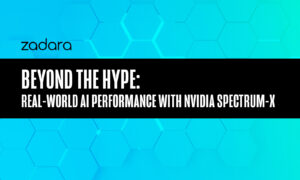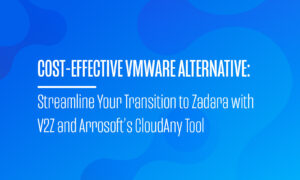The infrastructure supporting artificial intelligence workloads has become as critical as the algorithms themselves. High-performance AI networking requires specialized infrastructure that can handle massive data throughput with minimal latency. As organizations race to implement increasingly complex AI models, the networking fabric connecting compute resources has emerged as either an enabler of innovation or its greatest bottleneck.
The Growing AI Infrastructure Challenge
The AI infrastructure landscape has undergone significant transformation in 2025, with adoption accelerating at unprecedented rates. According to the 2025 State of AI Infrastructure Report, 90% of IT leaders are now deploying generative AI, with C-suite leadership driving these initiatives at an unprecedented rate of 81%, up from 53% in the previous year.
Organizations face numerous AI infrastructure challenges, including bandwidth limitations and latency issues that directly impact model performance. The statistics paint a clear picture of the mounting pressure on networking resources:
| Challenge Category | Impact Percentage | Year-over-Year Change |
|---|---|---|
| IT Infrastructure Constraints | 44% | Primary barrier |
| Bandwidth Issues | 59% | Increasing |
| Latency Challenges | 53% | Up from 32% |
| Skills Gap | 86% | Critical concern |
| Staffing Gaps | 61% | Up from 53% |
Traditional networking approaches designed for general-purpose computing simply cannot keep pace with the demands of modern AI workloads. The massive datasets required for training and the distributed nature of AI computation create unique networking requirements that demand specialized solutions.
Spectrum-X: Technical Architecture and Capabilities
Spectrum-X represents a significant advancement in Ethernet-based networking specifically designed for AI workloads. Developed by NVIDIA, this technology addresses the fundamental networking challenges that have limited AI performance and scalability.
At its core, Spectrum-X is built to handle the massive east-west traffic patterns characteristic of distributed AI training. The architecture supports remarkable scale with up to 256 200G ports in a single hop configuration and can expand to support up to 16,000 ports in a two-tier leaf/spine topology.
The platform’s key technical innovations include:
Ethernet-Based Networking for AI: The Spectrum-X Approach
Ethernet-based networking for AI applications offers superior flexibility compared to traditional approaches. Spectrum-X leverages this foundation while adding critical capabilities specifically designed for AI workloads:
- Telemetry-Based Control
- Real-time traffic monitoring that provides visibility into network behavior
- Dynamic congestion management that prevents bottlenecks before they impact performance
- Automated traffic optimization that continuously adjusts to changing workload patterns
- Integration Features
- NVIDIA BlueField-3 SuperNICs support for accelerated networking
- DPU acceleration that offloads networking tasks from CPUs
- NVIDIA Air integration for simplified management and deployment
- What Just Happened (WJH) technology for advanced network diagnostics
AI Network Performance Metrics and Benchmarks
The performance improvements delivered by Spectrum-X are substantial and measurable. Key AI network performance metrics include throughput, latency, and adaptive routing capabilities:
| Feature | Performance Impact | Implementation Details |
|---|---|---|
| Throughput Improvement | 42% increase | With WEKA integration |
| Adaptive Routing Performance | 33.5GB/s | Up from 23.5GB/s baseline |
| Port Capacity | 256 200G ports | Single hop configuration |
| Maximum Network Size | 16,000 ports | Two-tier leaf/spine topology |
These metrics translate directly to faster model training times, more efficient inference, and the ability to scale AI workloads beyond previous limitations.
NVIDIA AI Networking Strategy and Vision
NVIDIA AI networking technologies are transforming how organizations deploy and scale their AI infrastructure. The company’s approach represents a comprehensive strategy focused on physical AI and advanced computing capabilities that extend far beyond traditional GPU acceleration.
NVIDIA’s vision for AI networking centers on creating an integrated ecosystem where networking is not merely a connection between compute resources but an active, intelligent component of the AI infrastructure stack.
Technology Roadmap
The Spectrum-X platform fits into a broader technology roadmap that includes several complementary initiatives:
| Initiative | Description | Impact |
|---|---|---|
| Cosmos Platform | Open-source AI development | Enhanced robotics and industrial AI |
| Blackwell GPUs | 92 billion transistors | 3,352 trillion AI operations per second |
| DRIVE Hyperion | Integrated AV platform | Advanced autonomous capabilities |
This integrated approach ensures that networking capabilities evolve in lockstep with computational resources, preventing bottlenecks and enabling new AI use cases that would otherwise be impractical.
Advanced AI Networking Solutions for Modern Data Centers
Modern AI networking solutions must address both performance and scalability challenges simultaneously. The integration of Spectrum-X technology with Zadara’s cloud infrastructure creates a powerful combination that addresses the full spectrum of AI networking requirements.
Zadara Cloud Services Integration with Spectrum-X
Zadara cloud services provide the foundation for deploying advanced AI networking capabilities across multiple environments. The integration delivers several key advantages:
| Aspect | Capability | Business Impact |
|---|---|---|
| Performance | Real-time traffic analysis | Optimized resource allocation |
| Automation | AI-driven adjustments | Reduced manual intervention |
| Multi-cloud Support | Cross-platform management | Seamless data operations |
| Latency Reduction | 30% improvement | Enhanced user experience |
This integration allows organizations to leverage the best of both worlds: NVIDIA’s cutting-edge networking technology and Zadara’s flexible, enterprise-grade cloud infrastructure.
AI Workload Optimization Through Advanced Networking
AI workload optimization through intelligent networking can dramatically improve model training times. The Zadara implementation of Spectrum-X technology enables:
- Continuous AI-driven analytics that identify optimization opportunities
- Real-time threat detection that protects valuable AI assets
- Automated response systems that maintain optimal performance
- Comprehensive performance monitoring across the entire AI stack
These capabilities ensure that AI workloads run at peak efficiency, maximizing the return on infrastructure investments.
Cloud Networking for AI: Meeting Tomorrow’s Infrastructure Demands
Cloud networking for AI workloads demands flexible architectures that can adapt to changing computational needs. As organizations increasingly adopt hybrid and multi-cloud strategies for their AI initiatives, the networking layer must provide consistent performance and management across environments.
Multi-Cloud AI Networking Capabilities
Multi-cloud AI networking strategies allow organizations to leverage the best capabilities from different providers. Zadara’s implementation of Spectrum-X technology enables seamless operation across:
- Public cloud environments from major providers
- Private cloud deployments in enterprise data centers
- Edge computing locations for low-latency AI applications
- Hybrid configurations that span multiple environments
This flexibility ensures that organizations can deploy AI workloads where they make the most sense from both a technical and business perspective, without compromising on networking performance.
Real-Time AI Traffic Monitoring and Management
Real-time AI traffic monitoring enables proactive management of network resources. The telemetry capabilities built into Spectrum-X, when combined with Zadara’s management layer, provide unprecedented visibility into network behavior:
- Traffic pattern analysis that identifies potential bottlenecks
- Workload characterization that informs resource allocation
- Performance anomaly detection that triggers automated responses
- Capacity planning insights that guide infrastructure investments
These monitoring capabilities ensure that AI networking resources are always aligned with workload requirements, preventing both over-provisioning and performance constraints.
High-Performance Computing Requirements for AI Workloads
High-performance computing environments benefit significantly from the advanced capabilities of Spectrum-X technology. As AI models continue to grow in size and complexity, the computational demands place increasing pressure on the underlying infrastructure.
The integration of Spectrum-X with Zadara’s cloud platform addresses several critical HPC requirements:
- Scale-Out Architecture
- Support for massive parallel processing across thousands of nodes
- Efficient communication patterns for distributed training
- Dynamic resource allocation based on workload characteristics
- Data Movement Optimization
- Intelligent data placement that minimizes unnecessary transfers
- Caching strategies that keep frequently accessed data close to compute
- Bandwidth management that prioritizes critical traffic
- Fault Tolerance and Reliability
- Automated failover that maintains workload progress
- Error detection and correction at the network level
- Redundant paths that prevent single points of failure
These capabilities ensure that AI workloads can leverage the full power of high-performance computing environments without being constrained by networking limitations.
Future Outlook and Infrastructure Evolution
The research indicates several critical trends for the future of AI networking that will shape infrastructure planning and investment decisions:
| Trend | Projected Impact | Timeline |
|---|---|---|
| Data Center Energy | 12% of US electricity by 2028 | Near-term concern |
| Skills Development | 86% expressing talent concerns | Immediate priority |
| Infrastructure Planning | 62% planning 1-3 years ahead | Medium-term focus |
Organizations that invest in advanced AI networking infrastructure today will be better positioned to address these emerging challenges while capitalizing on the opportunities presented by increasingly sophisticated AI capabilities.
Conclusion
High-performance AI networking has emerged as a critical factor in the success of enterprise AI initiatives. The combination of NVIDIA’s Spectrum-X technology with Zadara’s cloud infrastructure provides a powerful solution that addresses the unique networking requirements of modern AI workloads.
By delivering significant improvements in throughput, latency, and scalability, this integrated approach enables organizations to overcome the infrastructure constraints that have traditionally limited AI adoption and performance. As AI continues to transform industries and create new opportunities, the networking infrastructure that supports these workloads will play an increasingly important role in determining which organizations can successfully leverage AI’s full potential.
For technology leaders planning their AI infrastructure strategy, the integration of advanced networking capabilities should be considered a core requirement rather than an optional enhancement. The performance gains, operational efficiencies, and future-proofing benefits delivered by technologies like Spectrum-X represent a compelling case for investment in high-performance AI networking.





